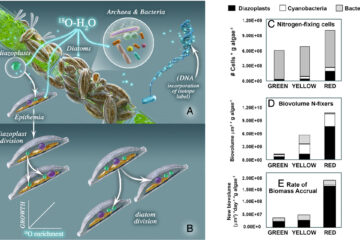The inhibitory effects of nitrogen deposition on asymbiotic nitrogen fixation are divergent between a tropical and a temperate forest
Asymbiotic nitrogen (N) fixation (ANF) is an important source of N in pristine forests and is predicted to decrease with N deposition. Previous studies revealing N fixation in response to N deposition have mostly applied understory N addition approaches, neglecting the key processes (for example, N retention and uptake) occurring in forest canopy. This study evaluated the effects of N deposition on N fixation in the soil, forest floor, mosses, and canopy leaves in a temperate forest (in central China) and a tropical forest (in southern China) with different treatments: control, understory N addition, and canopy N addition. Results showed that total ANF rates were higher in the temperate forest (2.57 ± 0.19 mg N m−2 d−1) than in the tropical forest (1.34 ± 0.09 mg N m−2 d−1). N addition inhibited the soil, forest floor, moss, and foliar N fixation in the temperate forest, whereas it inhibited only the soil N fixation in the tropical forest. Compared to canopy N addition, understory N addition overestimated the inhibitory effects of N deposition on total ANF slightly in the tropical forest (by 35%) but severely in the temperate forest (by 375–472%) due to neglecting canopy retention of N. In summary, our findings indicate that ANF has different rates and sensitivities to N addition between tropical and temperate forests and that understory N addition overestimates the N deposition effects on ANF in forests, particularly in the temperate forest. These findings are important for our accurate understanding and estimate of terrestrial N fixation under N deposition scenarios.


